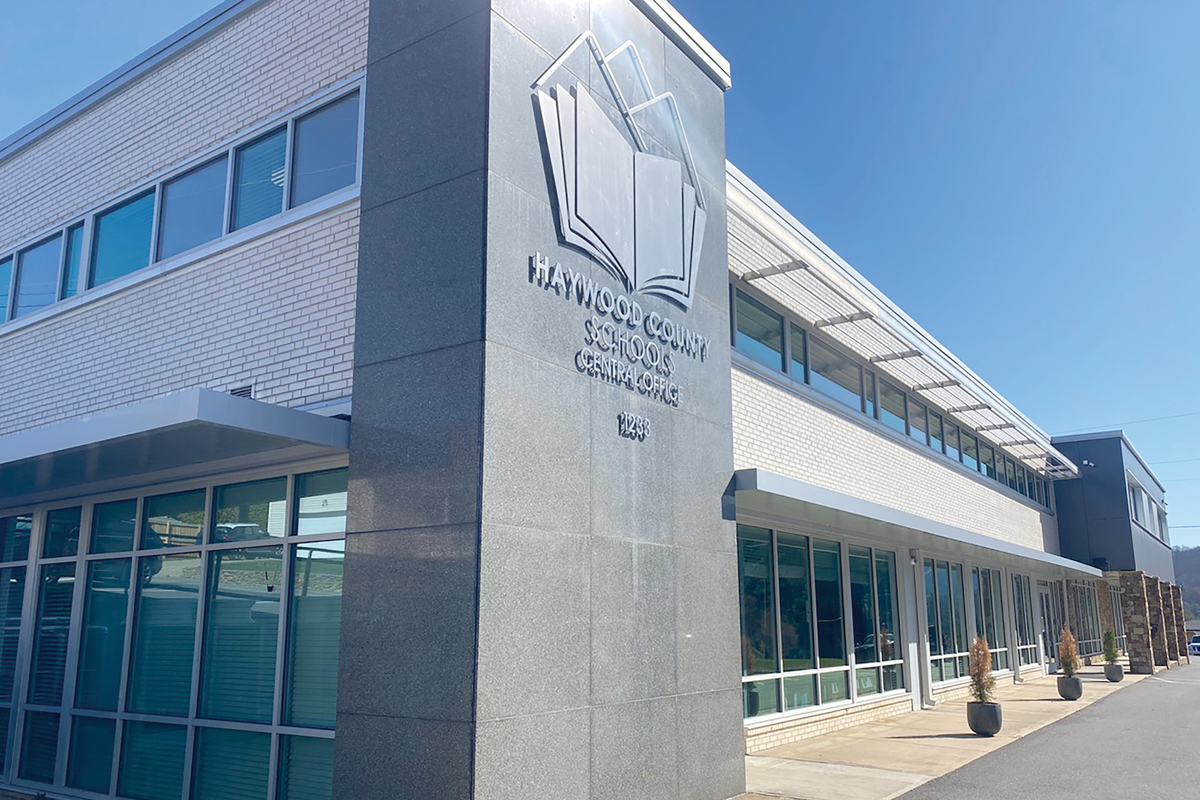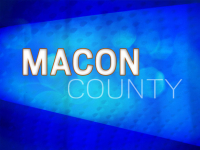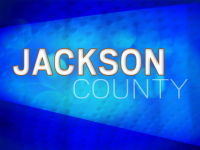Making do: Haywood Schools budgets for post-mill future
 HCS administration created this year’s budget in the wake of Canton’s mill closure. Hannah McLeod photo
HCS administration created this year’s budget in the wake of Canton’s mill closure. Hannah McLeod photo
When Pactiv Evergreen announced it would close its Canton paper mill last year, Haywood County Schools was already facing a host of other challenges, among them a declining student population, costs incurred from damages caused during the Pigeon River flood in 2021, and the impending end of COVID-era relief funds.
However, after tightening its belt last year in response to those challenges and the unknowns associated with the mill closure, the school system is financially well-positioned for the coming year.
“There are a lot of changes,” said school board member Jimmy Rogers. “Haywood county schools has done a fantastic job of saving positions and saving jobs and being able to grow as we are.”
Findings
After the mill closure announcement, Haywood County Schools contracted with Numerix Solutions to evaluate the ramifications of losing one of the county’s largest employers. Michael Miller presented the Numerix findings to the board of education during its March work session.
Numerix provides forecasting services for school systems for short- and long-range planning. Miller, who heads up the firm, worked with the Kannapolis City Schools after the central North Carolina city saw the closure of Pillowtex in 2003 and the loss of 4,800 jobs.
“The unique part of this project was demographic analysis of trying to quantify the impact of the closing of the mill and how that’s going to affect the enrollment over the next several years,” said Miller.
Related Items
A June 2023 report by Waynesville-based Synvea Economics estimates the closure of the plant would directly result in the loss of 900 jobs and would impact another 983 related jobs in Haywood County.
In his last budget presentation to the board of education, previous Superintendent Bill Nolte warned that declining student enrollment would have a major impact on future budgets. Public schools are funded a certain amount for every student in the system, which is referred to as a school district’s average daily membership (ADM).

Haywood County Schools’ student population has been decreasing by an average of 129 students, or 2% per school year since the 2018-19 school year. The school system saw its largest drop in enrollment in 2020.
“Virtually every county I work with has gone through similar experiences from COVID,” said Miller. “Some are on the recovery, some are not.”
In total, average daily membership has decreased by 603 students since 2019. In that same time, non-HCS schools — charter, private and homeschools — have gained 662 students.
“I will not say that there’s a direct correlation, that you have a one-to-one correspondence between students leaving HCS and going to other [schools], but it’s bigger than a coincidence. Let’s put it that way,” said Miller. “This is a phenomenon that we’re seeing in several districts that I’m working with.”
The North Carolina Department of Public Instruction estimates that there are 629 students attending Haywood County’s Charter school, Shining Rock Classical Academy; 246 students in private schools as of the 2022-23 school year; and 1,248 who are homeschooled, also as of the 2022-23 school year.
Haywood County School Board Chairman Chuck Francis asked Miller whether he had any insight into why students who left the public school system during the COVID pandemic don’t seem to be returning.
“We purposely opened our schools as quick as possible to get them back in front of a teacher in person learning that we were allowed to by state law,” said Francis.
 While Miller didn’t have a clear answer, he has found a similar pattern across other districts he’s worked with.
While Miller didn’t have a clear answer, he has found a similar pattern across other districts he’s worked with.
“Most of [the school systems] I’m working with are seeing the same situation you are, that once they go to those nontraditional schools, they’re going to stay there for a while,” Miller said.
In the upcoming budget cycle, Haywood County Schools will pass along $1.7 million in annual funding to Shining Rock Classical Academy. As required by law, ADM funding must follow a student to the public school of their choice. As more students choose a charter school, HCS must relinquish more money to them.
At an average cost per teacher of $65,000, including insurance and benefits, that $1.7 million could pay for almost 25 teaching positions.
Projections
The purpose of the 10-year membership forecast from Numerix is to provide HCS leadership with some of the information needed to anticipate and plan for adequate capacity and resources needs in the future. In addition to birth rate data and GIS analysis, researchers used a district-wide staff survey to inform its demographic forecast.
According to the firm’s findings, even if the school system saw no demographic impact from changes to the local economy, like the closure of the mill, the school system would still likely see an annual decrease of 0.64% in its student population over the next 10 years. There would be an estimated drop to 6,155 students in the 2033-34 school year as compared to the current ADM of about 6,500.
With the impact of the mill included in the forecast that annual decrease rises to 1.16% with the school system seeing an ADM of 5,839 by the 2033-24 school year, a drop of about 600 students.
“The methodology I use assumes that any impacts from the mill are pretty much going to be over in five years,” said Miller. “Then in 2033 it evens out again so you’re not seeing any impact from the mill… so most of the impact occurs in those first three or four years.”
This means that while the school system has seen a drop in over 600 students over the past five years, the pace of decline is projected to level off, with the school system projected to lose a similar amount, somewhere between 400 and 600 students, over the next 10 years.

“It seems to me like the worst part of the decline is probably past,” said Miller. “That’s not to say it’s not going to drop down a little bit more, but I think most of the impact is probably behind you.”
Miller pointed out one important factor that Haywood County Schools has on its side — the system’s high-achieving academic performance. Haywood County Schools is currently ranked seventh in the state.
“It’s not a small matter for a family to try to relocate out of this district that has such a great reputation, has such great schools and produces such wonderful graduates,” said Miller. “I don’t know how to measure that, but it is a factor.”
The study conducted by Numerix was funded by Haywood County and EdNC.
Budget
In addition to a declining student population, Haywood County Schools is facing the end of the federal Elementary and Secondary School Emergency Relief (ESSER) funding that was distributed during the COVID pandemic. The 2023-24 budget was the last budget to include ESSER money, all of which has to be used by September of this year.
Additionally, the state legislature mandated a 7% pay raise for teachers in its last budget, 4% in the current fiscal year and 3% for the upcoming year.
“The 3% salary increase was not something we chose, it was something that was legislated, although we do support those increases,” said Putnam. “That was not a local option, that was a state option.”
According to Putnam, the primary focus points for the 2024-25 budget are to recruit, maintain and support employees, limit expansion items in the local current expense budget and adjust the budget as needed to account for declining enrollment and associated issues with the Canton mill closure.
The local current expense budget will increase about $1.5 million in the coming budget cycle for a total of just over $19 million, with a per pupil appropriation rate of $2,509.86. The county appropriation will account for about $600,000 of the increased amount, with the rest coming from a fund balance allocation.

The largest portion of that increase is going toward the 3% raise for locally paid personnel, as well as paying for teachers who had been paid out of ESSER funds last year.
“We never created positions with ESSER money,” said Putnam. “We kept the same number of teachers, we simply moved them over to ESSER funds to help pay for those for a year.”
That strategy worked, allowing the HCS fund balance to recover to $1.5 million. In the coming budget year, the school system is allocating $719,483 of fund balance into the budget as a safety cushion, with the hopes that it will not need to use it.
“That fund balance allotment could be much higher had we not preemptively made staffing reductions last year,” Putnam said.
Last year the school system cut about 40 positions by simply not replacing outgoing teachers.
The capital budget is also set to increase next year, by about $350,000, for a total of $1.25 million.
The school system moved student device replacement into the capital budget and out of the local current expense budget which accounts for the increase. That $350,000 pays for the yearly replacement of all student Chromebooks and iPads.
Other projects include changing a heating system at Canton Middle School, upgrading a fire alarm system at Clyde Elementary School, a new plumbing truck and spare AC units for the maintenance department, replacing the roof at the old Haywood Community Learning Center, paving at Pisgah and Tuscola and replacing a chiller at Riverbend Elementary.
The capital outlay budget also supports safety efforts throughout the school system. Last year, Haywood’s board of commissioners instituted a tax increase to pay for School Resource Officers in every school in the system at an annual cost of $1.5 million. This money is allocated to law enforcement offices rather than the school system itself.
Haywood County Schools receives its largest source of funding through the state, an amount that is also determined based on ADM. While the school system has no preliminary planning budget data from the state, the current year allocation from the state is about $52 million. The current year allocation in federal grant funds is just under $5 million.
The child nutrition budget will increase by about 2% in the coming year to pay for increased food costs and the 3% payroll increase.
The nutrition program operates independently of other school programs with revenues from supplemental items sold, USDA cash reimbursements and USDA donated commodities. The nutrition department is reimbursed $0.38 for paid breakfasts, $0.50 for paid lunches, $2.73 for free breakfasts and $4.35 for free lunches.
The total estimated expenses for the 2024-25 school year are $5.36 million, 54% of which covers labor and benefits, 40% pays for food and supplies and 6% goes towards overhead.
Based on the current percentage of free and reduced students that the school system has, 80% of meals are covered at the free rate and the other 20% are covered at the paid rate.
According to Nutrition Director Allison Francis, the school system serves breakfast to 40% of students, up from 32% during the previous school year. Lunch participation is at 80%, up from 68% last year.
“We’ve seen an increase in both categories, but there is a lot of room for growth at breakfast,” Francis said.
The Haywood County Board of Education unanimously approved the proposed 2024-25 budget during its regular March meeting.













